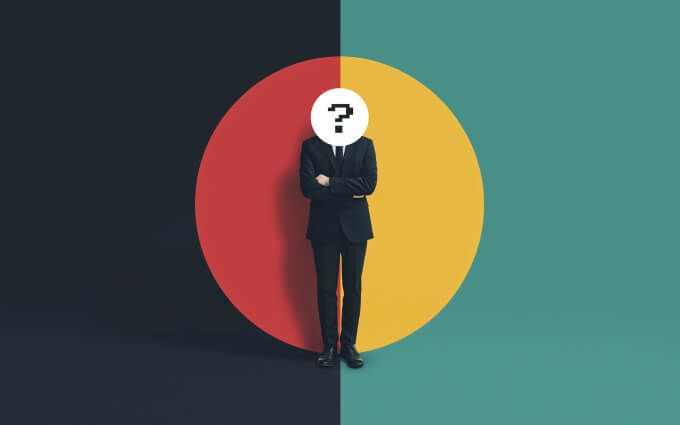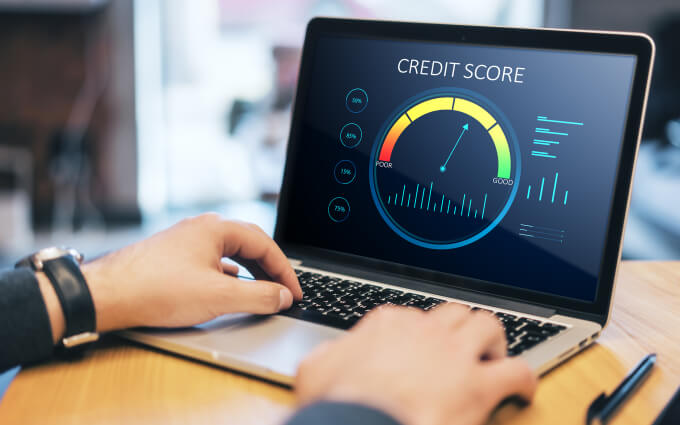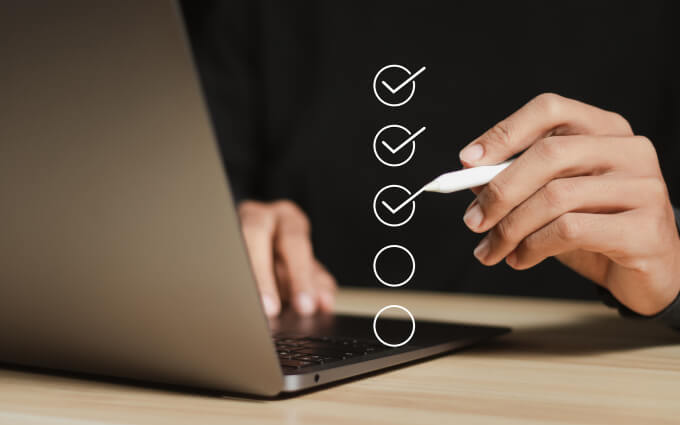- Home
- Loans & Credit
- What’s the Difference Between Secured and Unsecured Loans?
What’s the Difference Between Secured and Unsecured Loans?
Secured and unsecured loans may seem similar, but their differences are key when choosing the right option for your financial needs. Learn how collateral, interest rates, and risk come into play for each type of loan.

- 26

Secured Loans: When Collateral is King
A secured loan is like borrowing money with a safety net—but not for you. It’s for the lender. To get a secured loan, you need to offer up some form of collateral, which could be anything from your car to your house, or even a savings account. The lender holds onto this asset as security, ensuring they have something to seize if you default on the loan.
Examples of Secured Loans
- Mortgage: Your home acts as collateral, which is why missing payments can lead to foreclosure.
- Auto Loan: The car you’re buying is the collateral, and the lender keeps the title until the loan is paid off.
- Home Equity Loan: Borrowing against the value of your home—essentially a second mortgage.
The upside? Lower interest rates. Because lenders feel more secure (pun intended) knowing they can grab your asset if you default, they’re usually willing to offer better terms. You’ll also typically be able to borrow larger amounts, which makes secured loans great for big purchases like homes or vehicles. However, the big downside is obvious: if you miss payments, you risk losing your prized possessions. Talk about high stakes!
Unsecured Loans: No Collateral, No Problem?
Unlike secured loans, unsecured loans don’t require you to put anything on the line. That sounds great, right? It can be, especially if you don’t want to risk losing assets like your home or car. Instead of relying on collateral, lenders look at your credit score, income, and financial history to decide if you’re trustworthy enough to lend to. Essentially, your creditworthiness is your ‘collateral.’
Common Types of Unsecured Loans
- Personal Loans: These are popular for anything from debt consolidation to wedding expenses. No need to offer up anything except your credit score.
- Credit Cards: Every time you swipe, you’re taking out an unsecured loan. The only consequence for nonpayment is a hit to your credit score—though that’s no small deal.
- Student Loans: Often used for educational expenses, student loans typically don’t require any collateral, but missing payments can have serious credit consequences.
However, with no collateral to fall back on, lenders take on more risk, which means higher interest rates for you. Unsecured loans also tend to come with stricter approval criteria and lower borrowing limits. And if you default? While you won’t lose a physical asset, your credit score can take a serious hit, making future borrowing more difficult.
Interest Rates and Borrowing Limits: The Trade-Offs
Interest rates are one of the biggest differences between secured and unsecured loans. Generally, secured loans have lower interest rates because the lender has the security of collateral. They know they can recover some of their losses by seizing your asset, so they don’t need to charge you sky-high interest to make up for potential risk.
Unsecured loans, on the other hand, can be a different story. Without collateral, lenders rely heavily on your creditworthiness to gauge how risky you are. As a result, unsecured loans usually come with higher interest rates to offset the risk. They also tend to offer smaller loan amounts, making them less ideal for major expenses like buying a home or car.
Approval Process: Speed vs. Security
If you’re in a hurry, an unsecured loan might be your best bet. Because there’s no need to assess collateral, the approval process for unsecured loans is often faster. Many lenders even offer instant pre-qualification, so you can get an idea of your rates and loan amount before officially applying. This makes unsecured loans a solid choice if you need cash quickly, like in an emergency.
Secured loans, by contrast, usually take longer to approve because lenders need to evaluate your collateral. Whether it’s a home or a vehicle, the value and condition of the asset need to be verified, which can add days or even weeks to the process.
Which One is Right for You?
The choice between secured and unsecured loans comes down to your individual needs and financial situation. If you have a solid asset and are looking for a larger loan with a lower interest rate, secured loans are probably the way to go. Just remember, the stakes are high if you default.
On the flip side, unsecured loans are perfect if you don’t have any collateral to offer or you’re looking for quick approval. Just keep in mind that you’ll likely face higher interest rates and more stringent approval requirements.
Ultimately, whether you choose a secured or unsecured loan, the key is to understand your financial situation, weigh the risks, and pick the option that fits your needs best. If you're still unsure, chatting with a financial advisor can help you sort through the details and make the right decision.
- 26
 Mira Johnson
Mira Johnson
Mira is a financial consultant with extensive experience in advising clients on a wide range of financial matters. Mira has a knack for making complex financial topics accessible to a broad audience. Over the years, Mira has contributed to various financial publications and blogs, sharing insights on money tips and advice, stocks and investments, loans and credit, making money online, and comprehensive tax and accounting strategies.
-
Loans & Credit
 How to Find the Best Personal Loans: Tips and Tricks
How to Find the Best Personal Loans: Tips and TricksNavigate the personal loan landscape with confidence using our expert tips and tricks. From understanding rates and terms to choosing the right lender, we've got you covered.
 Alex JensenAug 21, 202422
Alex JensenAug 21, 202422 -
Money Tips & Advice
 How to Pay Off Debt Faster: Proven Strategies to Stay Debt-Free
How to Pay Off Debt Faster: Proven Strategies to Stay Debt-FreeEliminate your debt faster with proven strategies like the avalanche method, consolidation, budgeting hacks, and side hustles to stay debt-free for the long haul.
 Chris AndersonSep 20, 202439
Chris AndersonSep 20, 202439 -
Loans & Credit
 Tips and Strategies for Credit Score Improvement
Tips and Strategies for Credit Score ImprovementExplore the ins and outs of credit scores, understand the factors that influence them, and discover practical steps to enhance your score for better financial opportunities.
 Mira JohnsonJul 29, 202415
Mira JohnsonJul 29, 202415 -
Taxes & Accounting
 Maximize Your Tax Deductions with These Expert Tips
Maximize Your Tax Deductions with These Expert TipsLearn how to make the most of your tax deductions with practical tips that can help you save more money and reduce your taxable income. From home office deductions to charitable contributions, we've got you covered with expert advice and strategies.
 Alex JensenAug 02, 202423
Alex JensenAug 02, 202423 -
Money Tips & Advice
 How to Build an Emergency Fund and Why It's Important
How to Build an Emergency Fund and Why It's ImportantCreating an emergency fund is essential for financial stability. This guide covers why it's important and provides practical steps to build your own safety net.
 Chris AndersonAug 12, 202426
Chris AndersonAug 12, 202426 -
Money Tips & Advice
 Effective Budgeting Strategies and How to Stick to Them
Effective Budgeting Strategies and How to Stick to ThemLearn how to master your finances in 2024 with these effective budgeting strategies. Discover methods like the 50/30/20 rule, digital tools, and tips for staying on track.
 Chris AndersonJul 24, 202422
Chris AndersonJul 24, 202422 -
Money Tips & Advice
 10 Simple Ways to Reduce Your Monthly Expenses
10 Simple Ways to Reduce Your Monthly ExpensesManaging your monthly budget doesn't have to be a daunting task. By implementing these ten straightforward strategies, you can reduce your expenses and increase your savings without sacrificing your lifestyle.
 Mira JohnsonAug 30, 202428
Mira JohnsonAug 30, 202428 -
Stocks & Investments
 The Pros and Cons of Investing in Index Funds
The Pros and Cons of Investing in Index FundsExplore the advantages and disadvantages of index funds, a popular choice for many investors due to their low fees, diversification, and consistent returns.
 Mira JohnsonAug 07, 202417
Mira JohnsonAug 07, 202417 -
Taxes & Accounting
 How to Prepare for Tax Season: A Comprehensive Checklist
How to Prepare for Tax Season: A Comprehensive ChecklistThis detailed guide provides a thorough checklist to help you prepare for tax season efficiently. Learn how to organize your documents, understand your filing status, and maximize your deductions for a stress-free experience.
 Chris AndersonAug 27, 202423
Chris AndersonAug 27, 202423 -
Make Money Online
 Passive Income Through Investing: How to Earn While You Sleep
Passive Income Through Investing: How to Earn While You SleepUnlock the secret to making money while you sleep through savvy investments. From dividend-paying stocks to real estate, we’ll show you how to create reliable streams of passive income without endless effort.
 Alex JensenSep 26, 202434
Alex JensenSep 26, 202434










